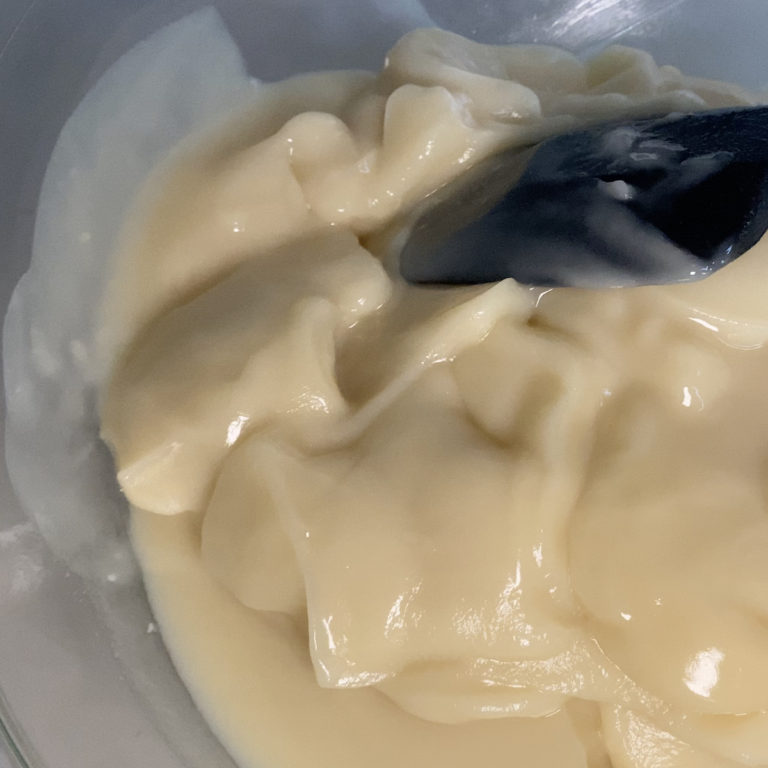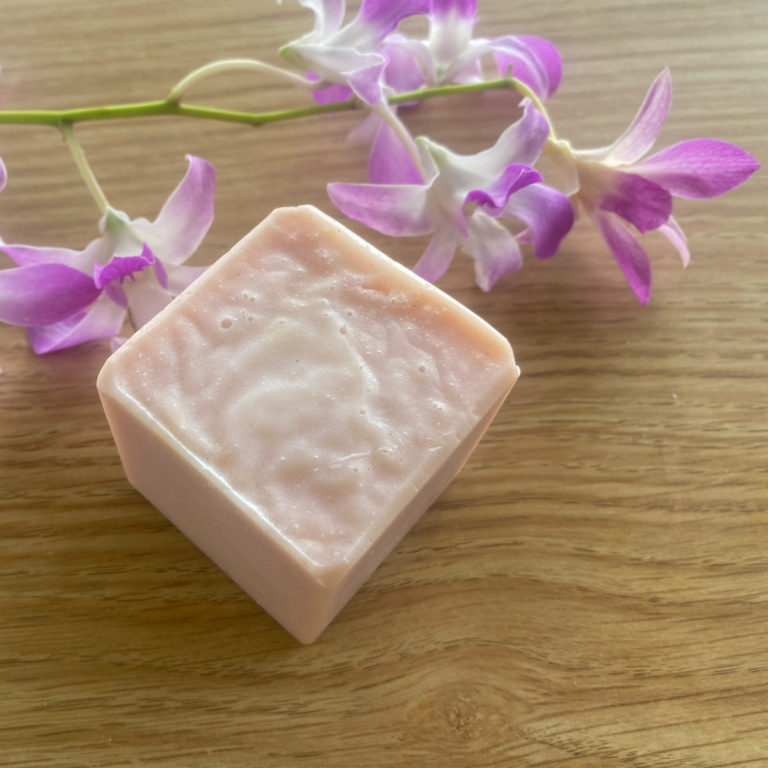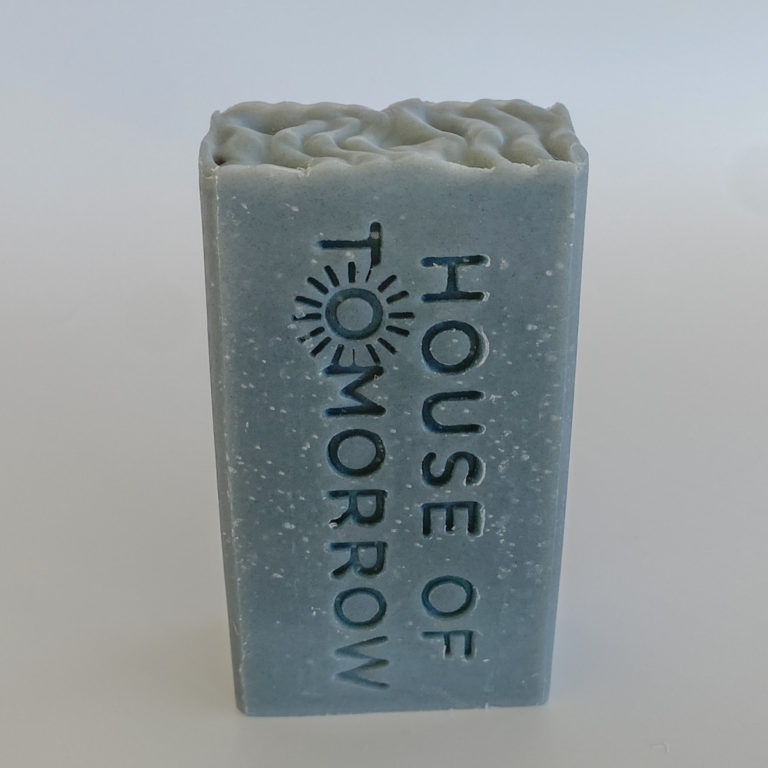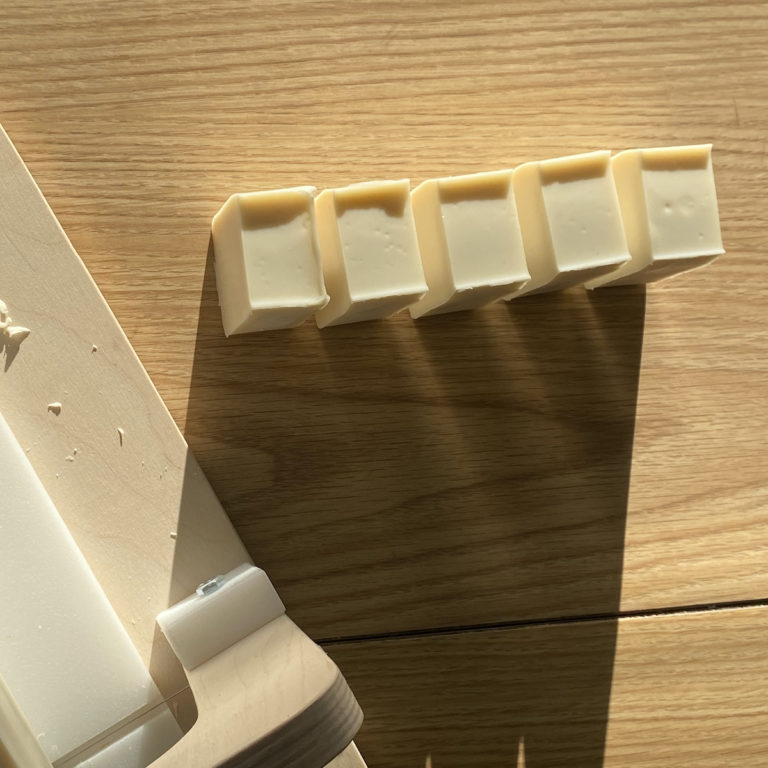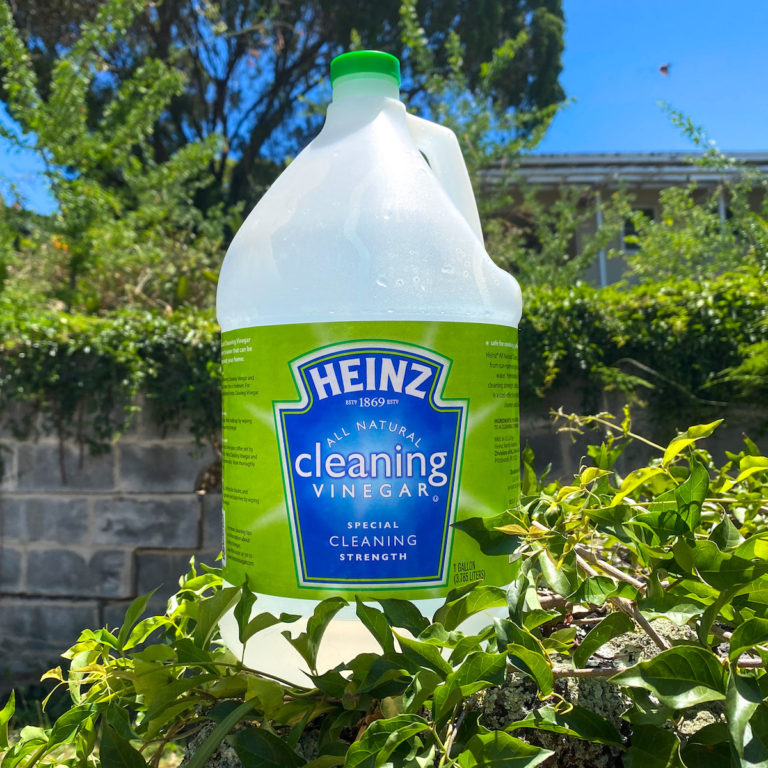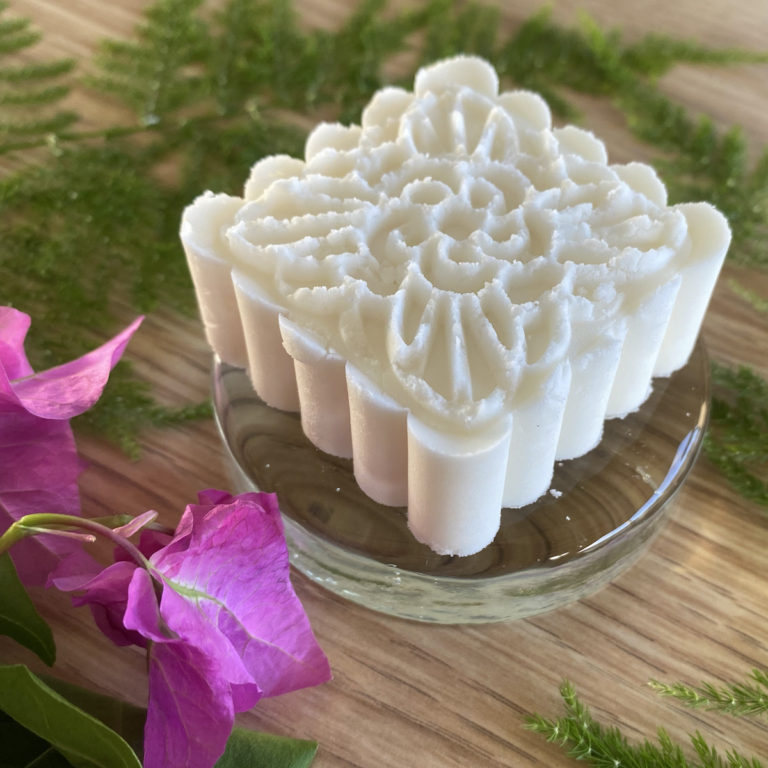How To Make Breast Milk Soap
This article covers how to make breast milk soap using two different breast milk soap recipes. Each of them result in a great bar of soap that I think you’re going to EL-OH-VEE-EEE.
Breast Milk Soap Benefits
It’s been awhile since my kids were young enough that I would have breast milk, but a friend who is still nursing approached me with this idea, and she reminded me that breast milk is human-made GOLD.
It’s been used, probably since the beginning of humanity to help people heal what ails them. While breast feeding fell out of favor in many developed nations, so much more of us now know the importance of breastfeeding our young, and have even discovered it works wonders when used externally too.
Moms have learned to use their boobie milk on everything from diaper rash to eczema to acne. My friend shared she uses it on her kids whenever they get a cut or have eye infections. Really, it’s a bit of a shame we don’t have unlimited forever-access to this liquid miracle.
When we make soap, we’re temporarily exposing the milk to a harsh alkaline environment in the soap batter and we don’t know exactly how many of its properties remain in the final product, and I would assume not all properties make it through to the end intact. Even still, making breast milk soap is worth it because the final product can last for over a year, which you definitely can’t say about straight from the titty breast milk.
Adding any type of milk to soap tends help skin hold moisture better, and creates a creamy quality to the lather.
How To Make Breast Milk Soap
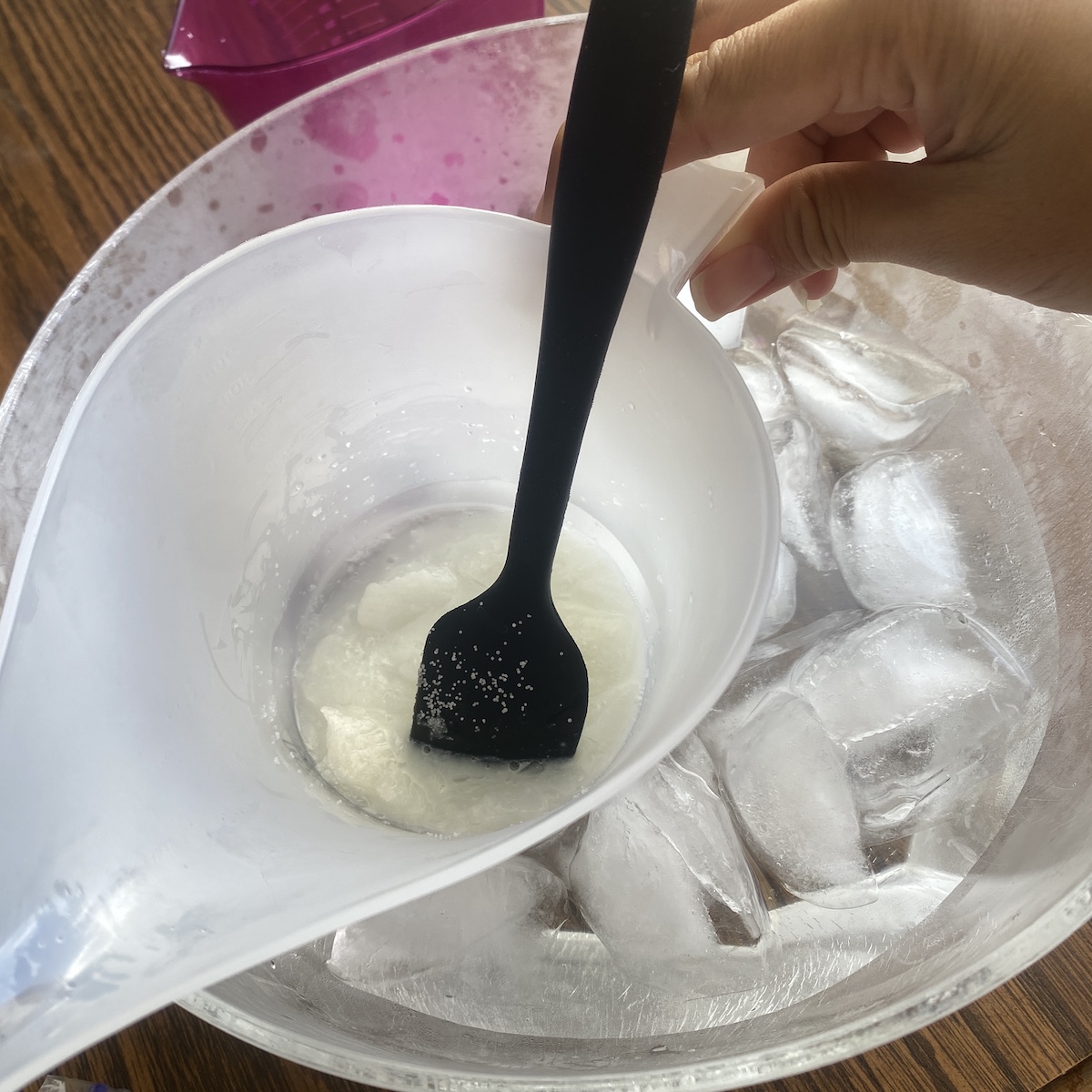
I recommend that you get some soap making experience under your belt before attempting to make breast milk soap, which uses intermediate-level skills. Having some experience with the basics will help you identify if things are going smoothly (or not) as you make this recipe. Check out my super-thorough guide on how to make cold process soap here.
Making breast milk soap requires some extra preparation, so plan ahead. It’s not something you should just decide you want to squeeze in while you have a spare hour in between other plans or responsibilities.
Freeze Milk
You’ll need to measure out a portion of breast milk (see recipe below) using a good scale and freeze it before beginning.
Why would you need to freeze it? Because breast milk contains sugars, and sugars tend scorch when exposed to lye (which heats up like crazy when exposed to liquid, which will be breast milk in this case).
Freezing allows us to reduce the chances of that burning and scorching happening, by keeping temperatures as low as they can possible be.
Ice Bath
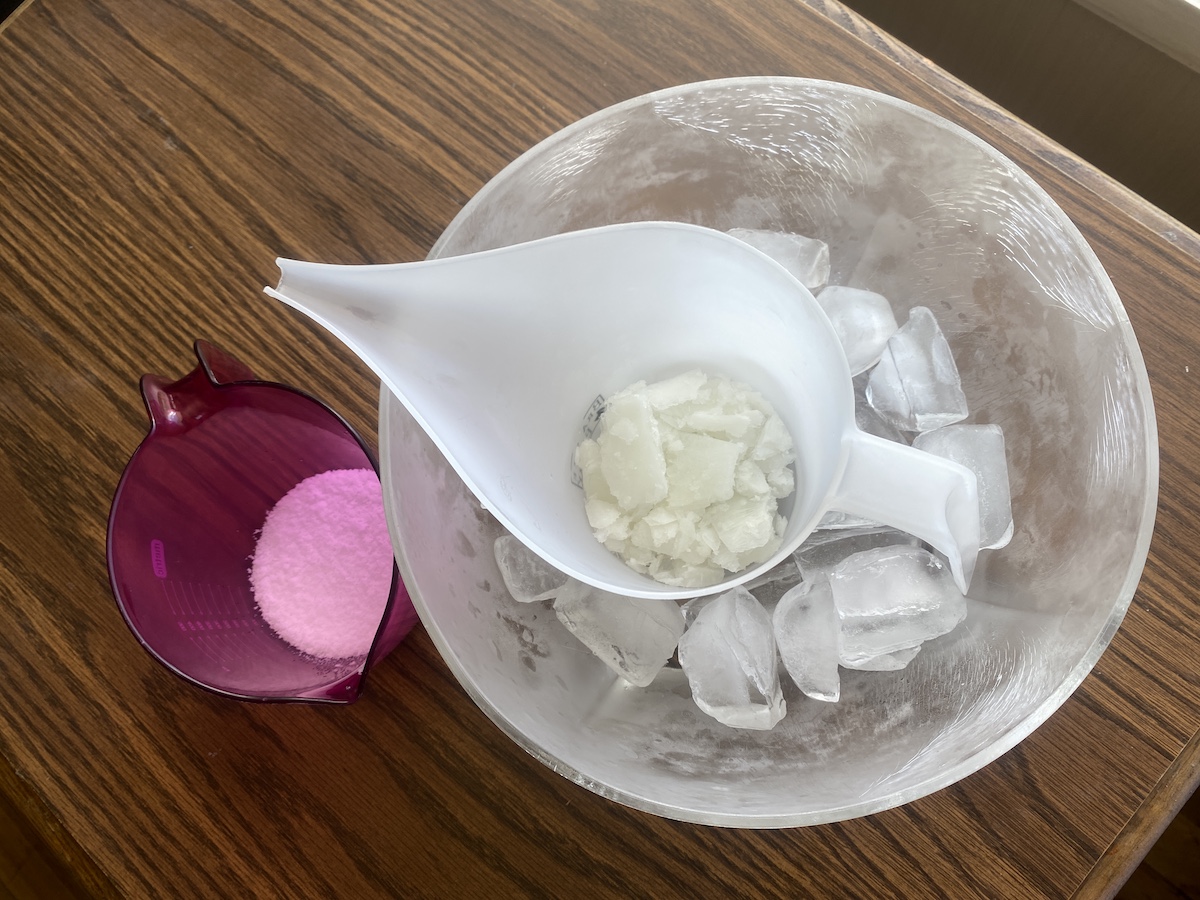
This is another strategy I use to keep temperatures low.
Find a bowl larger than your lye solution container, and fill it with ice (lots) and water.
How much ice and water? Well, remember that you’re going to be sitting a container that contains your lye and milk solution into this ice bath. So fill it enough that it will definitely rise to reach the level of your lye and breast milk solution, but not so much that it will overflow once you set your container in it.
Work Really, Really, Really Slowly
Making breast milk soap takes way longer than a regular cold process soap because you need to add the lye very slowly to the frozen breast milk. I’m talking extremely slow. Turtle-snail-sloth-painfully-slow slow. This is important because it also helps to keep temperatures lower to reduce the risk of scorching.
Lye Safety
We’re using lye in each of the recipes I’m sharing below. We need it to turn our oils into soap. It’s serious stuff and not to be handled without care. Before going any further, review my post on lye safety here.
Extra Simple Breast Milk Soap Recipe
This recipe uses equal parts of just 3 oils, and these oils are relatively easy to find.
- ~1 lb recipe (444 grams of soap batter)
- 5% superfatted
- if using essential oils as fragrance, the fragrance ratio is 0.3oz/lb
TOOLS/EQUIPMENT
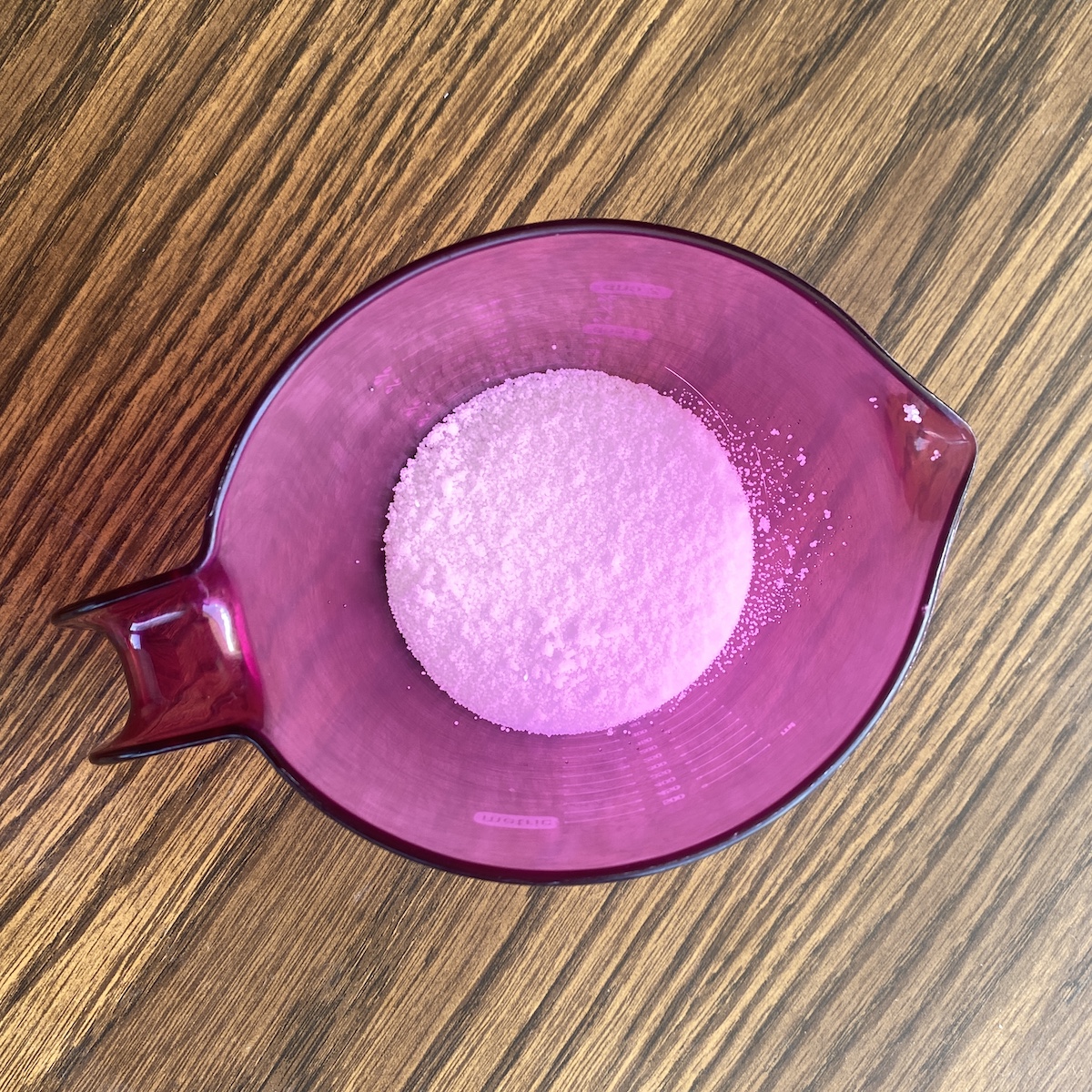
- Soap mold that can hold at least 1lb of batter, lined if applicable (or learn how to make soap without a mold)
- Scale that has the ability to measure in grams
- Digital thermometer
- Safety goggles for eye protection
- 2 lye-safe plastic containers (one that is large enough to hold the full amount of your lye + breast milk)
- Large bowl to hold your ice bath
- Sieve/strainer
- Stainless steel pot large enough to hold your entire batch of soap batter and still leave some extra room at the top to account for splashing
- Large container to measure soft oils
- Stick blender
- Rubber spatula
- Soap cutter, knife, or cheese cutter to slice finished soap
- Optional: gloves to protect your hands
INGREDIENTS
Note: ingredients in this recipe are measured in grams
LYE SOLUTION
- Breast milk (frozen): 80 g
- Lye: 45.2 g
HARD FATS
- Coconut oil: 103.3 g
- Sustainable palm oil: 103.3 g
SOFT FATS
- Olive oil: 103.3 g
OPTIONAL
- 9.61 g essential oils of your choice
- 1/4 tsp kaolin clay to assist in anchoring essential oil scents
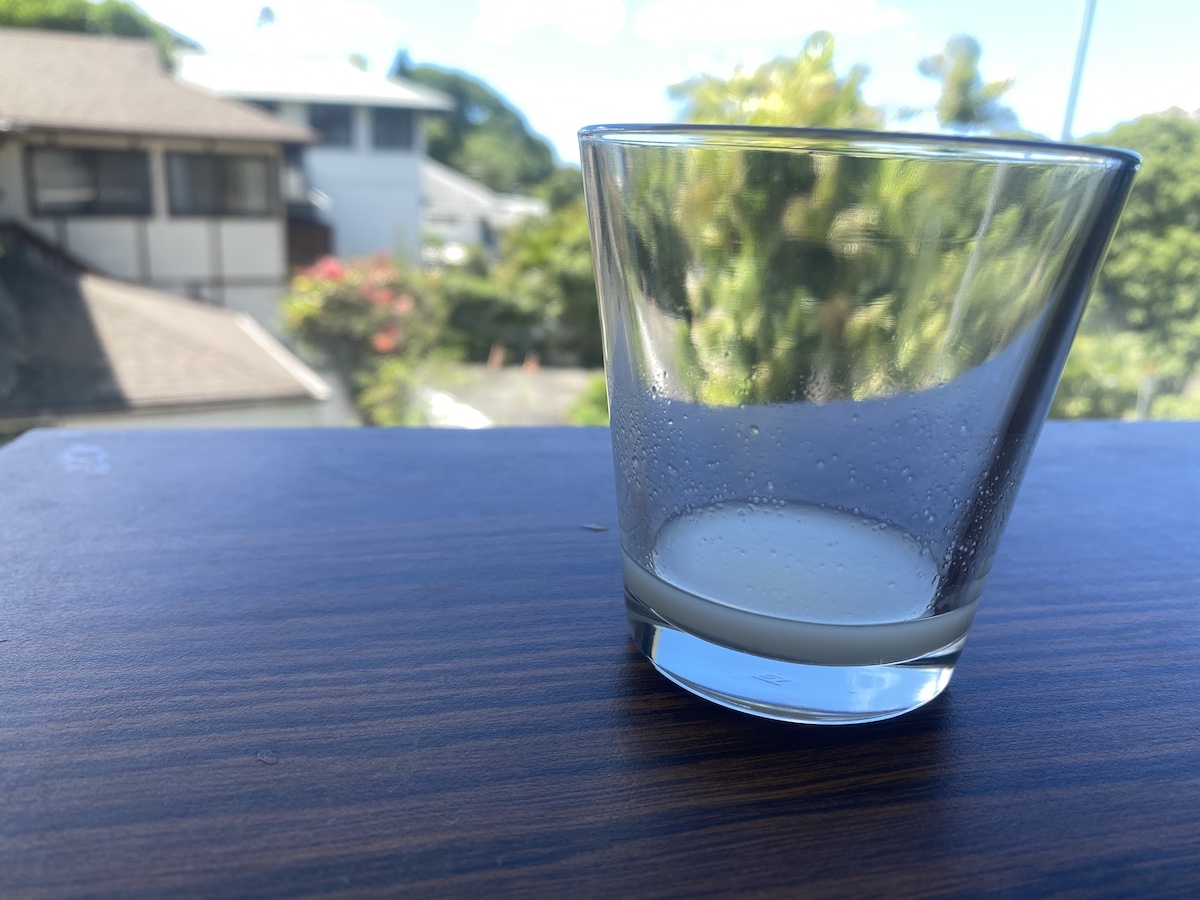
INSTRUCTIONS (USING THE COLD-PROCESS METHOD)
- Gather ingredients and equipment
- If you’re using essential oils and kaolin clay, measure them out and mix them together so the essential oils soak into the clay, which will help to anchor the scent.
- Measure out your hard oils into a pot and heat it on low until melted. Upon oils melting, remove immediately from the heat source. Set it aside to cool to 120-130 degrees Fahrenheit (check with your digital thermometer periodically) while you move on to the next steps.
- Measure out your soft oils and set them aside
- Measure out lye into a lye-safe plastic container
- Put your breast milk into container that is large enough to hold the entire amount of your lye solution. Put that container into your ice bath.
- Add just a tiny bit of lye to the breast milk. Stir to dissolve lye and melt breast milk. Repeat. You really want to take your time here. If possible, keep the temperature of the lye and breast milk solution under 100 degrees. You may see the milk changing into a yellow color and it may begin to smell different. Don’t worry about it, but continue to exercise ridiculous amounts of patience.
- Carefully pour your soft oils into your pot of hard oils. Doing this will bring down the temperature of your hard oils, but not so much that your hard oils will solidify.
- Carefully add your lye and breast milk solution to your pot of oils, pouring it through a sieve or fine mesh strainer to catch any bits of lye that didn’t fully dissolve. Doing this will drastically reduce the temperature of your oils, but not so much that your hard oils will solidify.
- Use your stick blender (set to OFF) to stir to begin combining the lye/milk solution and oils for about a minute.
- With the head of the immersion blender still fully submersed, turn the blender on and stir/blend for about a minute.
- Let the soap batter rest and thicken up for about a few minutes.
- Again stir with the blender set to OFF for a minute, blend for a minute, then rest for a few minutes. Repeat until your batter has reached your desired level of trace, adding your essential oils (if you’re using them) prior to your desired level of trace being reached.
- Carefully pour your soap batter into your lined mold
- Set your soap aside someplace safe to cure. Since there’s breast milk in this formula and the less heat we expose it to the better, I recommend NOT forcing your soap to gel.
- Wait 24-36 hours before unmolding and cutting.
Palm-Free Breast Milk Soap Recipe
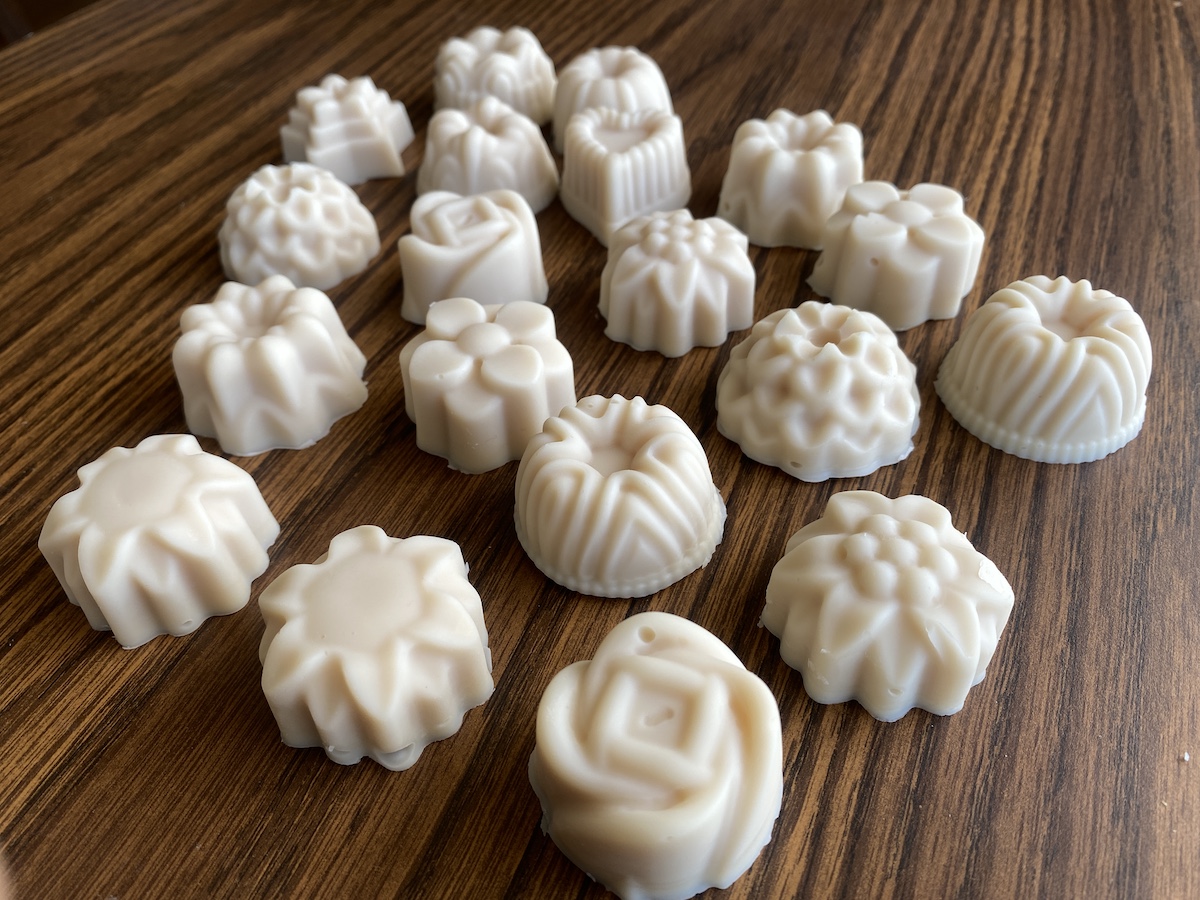
This recipe makes some great soap without palm oil, which many prefer not to use due to the controversy surrounding it. The steps and methods are basically the same as the recipe listed above, but the ingredients list differs.
TOOLS/EQUIPMENT
Same as above
INGREDIENTS
Note: ingredients in this recipe are measured in grams
LYE SOLUTION
- Breast milk (frozen): 80 g
- Lye: 45.5 g
HARD FATS
- Coconut oil: 102.4 g
- Shea butter: 28.8 g
- Pure soy wax (such as Golden Brands 464): 28.8 g
SOFT FATS
- Olive oil: 144 g
- Castor oil: 16 g
OPTIONAL
- 9.92 g essential oils of your choice
INSTRUCTIONS
Same as above
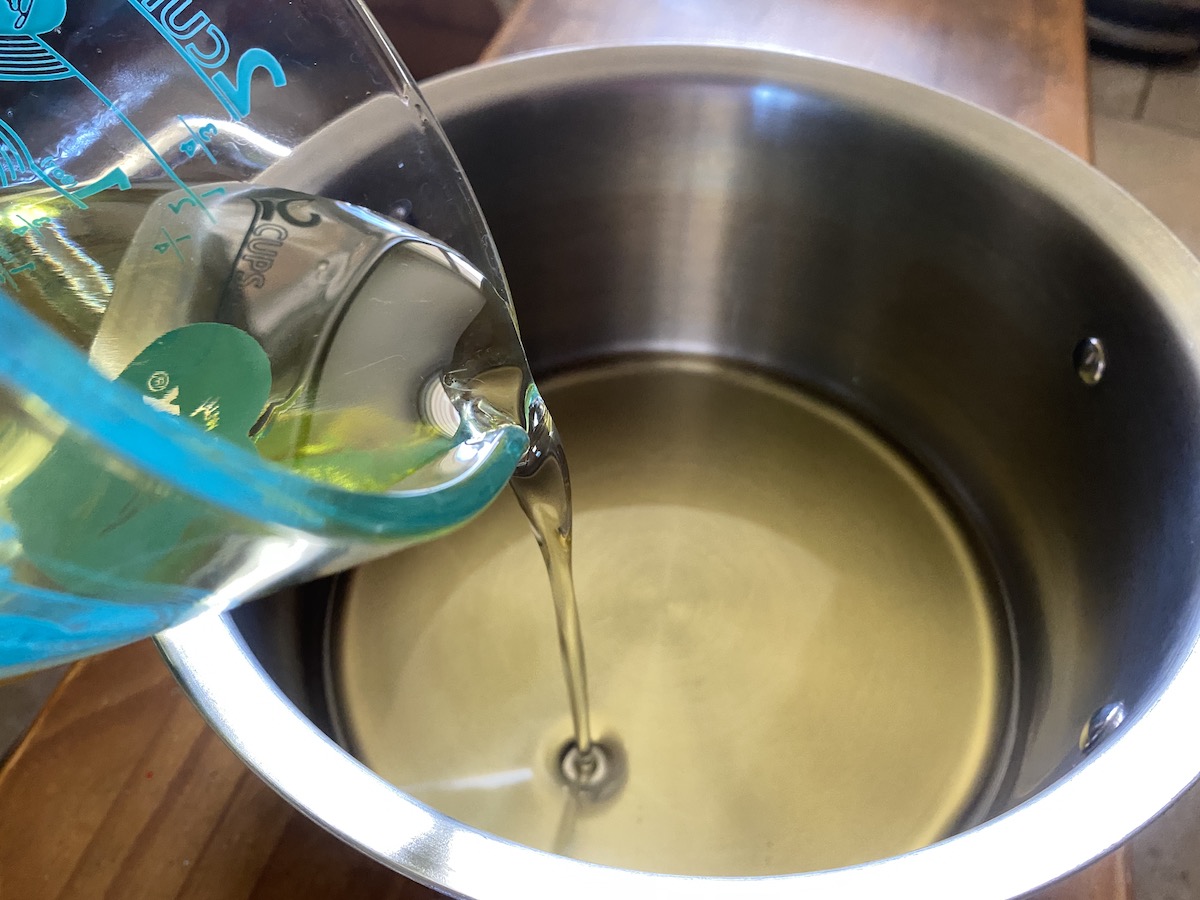
Tips On Making This Soap
- Plan ahead. Freeze your milk the night before and block off 2.5 hours of your day for the actual soap making and related prep.
- When you’re adding lye to frozen breast milk and wondering if you could possibly do this any slower, dig deep into your well of patience and find a way to do it even slower.
- To keep your ice bath colder for even longer, stick your icebath into the freezer for about an hour before starting. This should result in the top surface and sides of the water freezing into thin ice while the middle remains liquid. Mixing this thin ice into your (now extra-cold) water can result in a bit of a slushy texture to your ice bath. It also makes your bath colder overall and every little bit helps.
Wrapping Up
Learning how to make breast milk soap is a great way to reap the benefits of one of our best assets, turning it into a long-lasting, highly-usable product.
It requires extra planning, patience and time, but the investment is worth it considering the awesome product you get out of this process.

